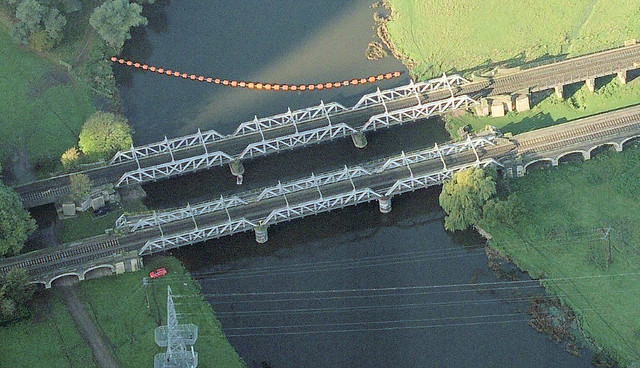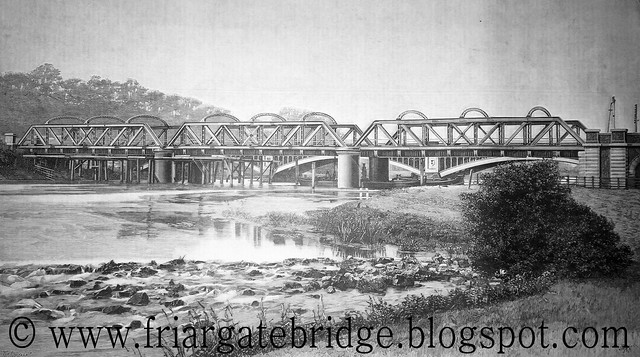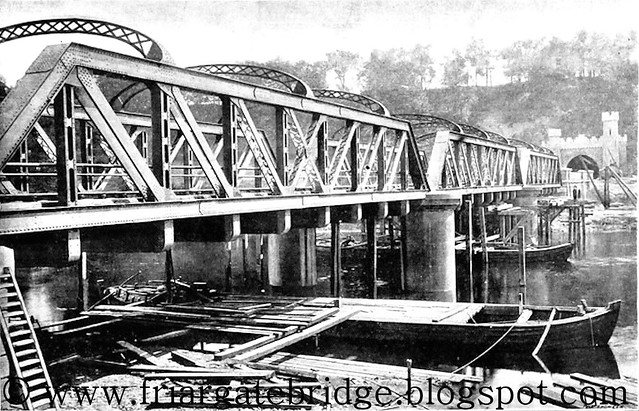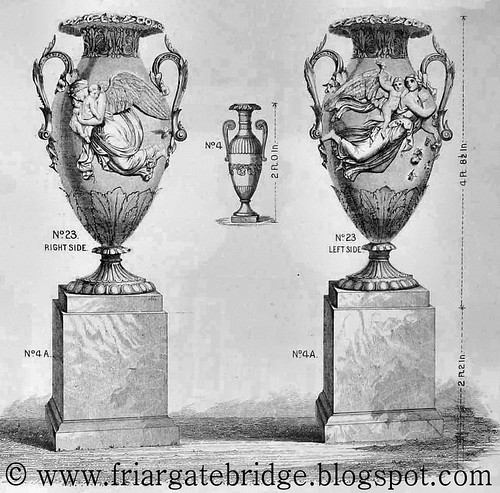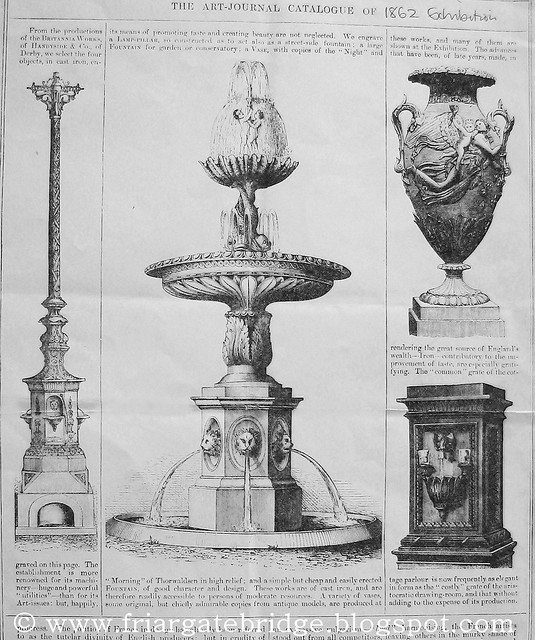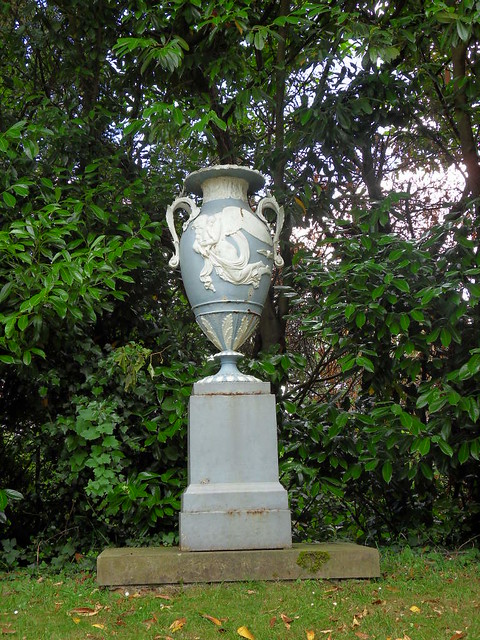I have finally located the grave of Andrew Handyside and Anastasia Handyside and other relations.
As you can see its a very basic grave indeed, I imagine the headstone has been placed down for "health and safety gone mad" reasons.
This grave is located in Uttoxeter New Road Cemetery, Derby.
The grave of Andrew Handyside and wife Anastasia.

The inscription in the centre of the cross is MS but I think this is just a generic makers mark.
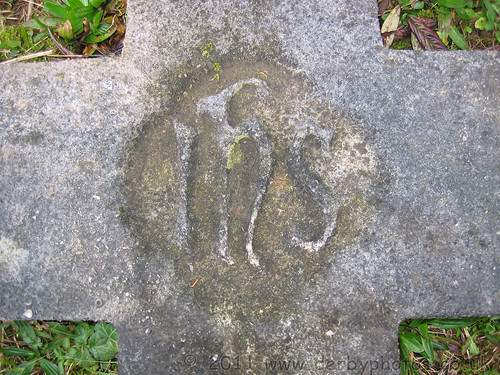
Andrew Handyside was the son of Hugh Handyside and Margaret Baird.
In the 1871 Census for Derby shows the people living at "The Cedars" as
Andrew Handyside - Head of house - 65 years old - Civil Engineer - Born in Scotland.
Anastasia Handyside - Wife - 48 years old - Born in Babanka, Poland.
Anastasia Henley - Motherinlaw - 88 years old - Born in Russia, St Petersburg.
Jane Ruddle - Servant Cook - 27 years old
Anastasia Henley was Anastasia Handyside's Mother (Andrew Handyside's Mother in law). She was born in St Petersburg on December 9th 1782 and died of Bronchitison at the age of 92 on February 17th 1875.
Her husband was John Henleywho from St Petersburg born on Bebruary 7th 1767 and died on July 1st 1855.
In the 1881 Census for Derby shows the people living at "The Cedars" as
Andrew Handyside - Head of house - 75 years old - Civil Engineer (Retired) Born in Edinburgh, Scotland.
Anastasia Handyside - Wife - 58 years old - Born in Babanka, Ukraine, Poland.
Eleanor Haverfield - Grand niece - 10 years old - Scholar - Born in Callander, Scotland
Ann Webb - Servant - 29 years old - Cook - Born in Arley, Shropshire
Emma Ault - Servant - 29 - Housemaid - Born in Derby, Derbyshire.
Anastasia Handyside Death Certificate
Registration District Kensington
Sub-district Kensington North in the County of London
When and where died: 16th Nov 1910, 50 St Marks Road, North Kensington
Name and Surname: Anastasia Handyside
Sex: Female
Age: 89 years
Occupation: Widow of Andrew Handyside, Civil Engineer
Cause of Death: Syncope following shock the result of a fracture of the femur caused by a fall Accidental
[Syncope – fainting, loss of consciousness from fall of blood pressure – Concise OED]
Signature,description and residence of informant: Certificate received from C Luxinoore Drew [?] Coroner for London Inquest this day 19th Nov 1910
When Registered: Twenty First November 1910
I would like to thank Peter Butt for the above information.
Anastasia Henley Death certificate
Registration District: Saint Peter, Derby.
When and Where died: 17 February 1875, The Cedars, Ashbourne Road
Name and Surname: Anastasia Henley
Sex: Female
Age: 92 Years
Occupation: Widow of John Henley a Merchant
Cause of Death: Gradual decay – Bronchitis, certified by HW Baker MRCS
Signature, description and resident of information:
Emily Buchanon, Daughter of dedeased, present at death, 8 Wilson Street, Derby
When registered: 18 Feb 1875
Andrew Handyside - Will
Made in 1877
Andrew left everything to his wife and sole executor Anastasia for her sole use.
In the case of Anastasia dying before him then to his niece Louise for her sole use and as sole executor.
In this plot are....
Andrew Handyside - Age 81 Interment date 13th June 1887
Anastasia Handyside - Age 87 Interment date 21st November 1910
Andrew Handyside died on Thursday 9th June 1887 from bronchitis.
Andrew Handyside was seventeen years older than his wife, Anastasia's mother was also called Anastasia and was born in St Petersburg (now Leningrad) both became British subjects.
According to the register, Andrew Handyside paid for this plot in advance !
While hunting for the gravestone of Andrew Handyside I found the plot for Alexander Buchanan. Alexander was Andrew Handyside's Nephew and also a manager at the Britannia Iron Works in Derby.
The gravestone details:
Alexander Buchanan 1829-1916
Emily Buchanan 1827-1912
This grave is located in Uttoxeter New Road Cemetery, Derby.
 Uttoxeter New Road Cemetery, Derby
Uttoxeter New Road Cemetery, Derby
This graveyard is rather large and very heavily populated with plots so it took several visits to locate it. Because the grave stone is on its face I had no choice but to identify it using adjacent plots.
 |
| Uttoxeter New Road Cemetery, Derby tilt-view. |
Thanks
Andy
Follow me on Twitter for latest info on Andrew Handyside and Friar Gate Bridge:
https://twitter.com/andysavage1969












